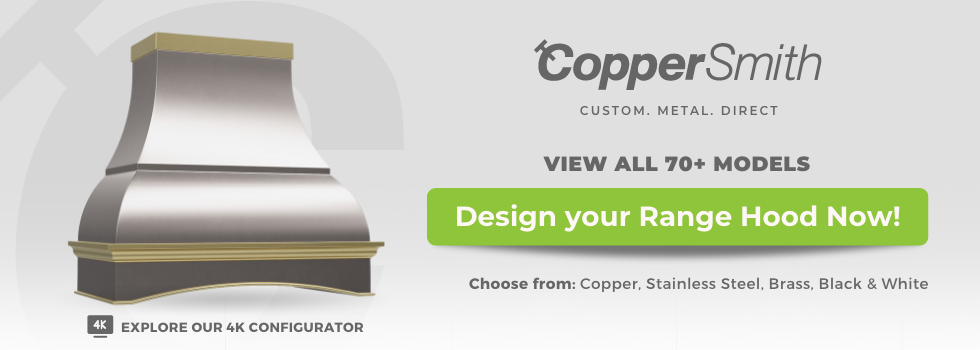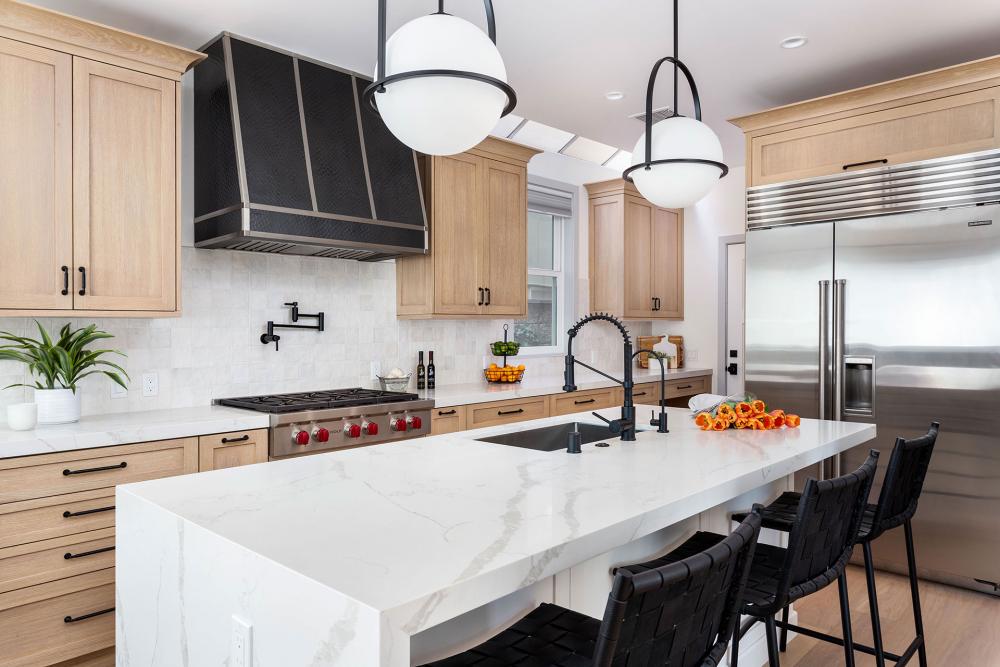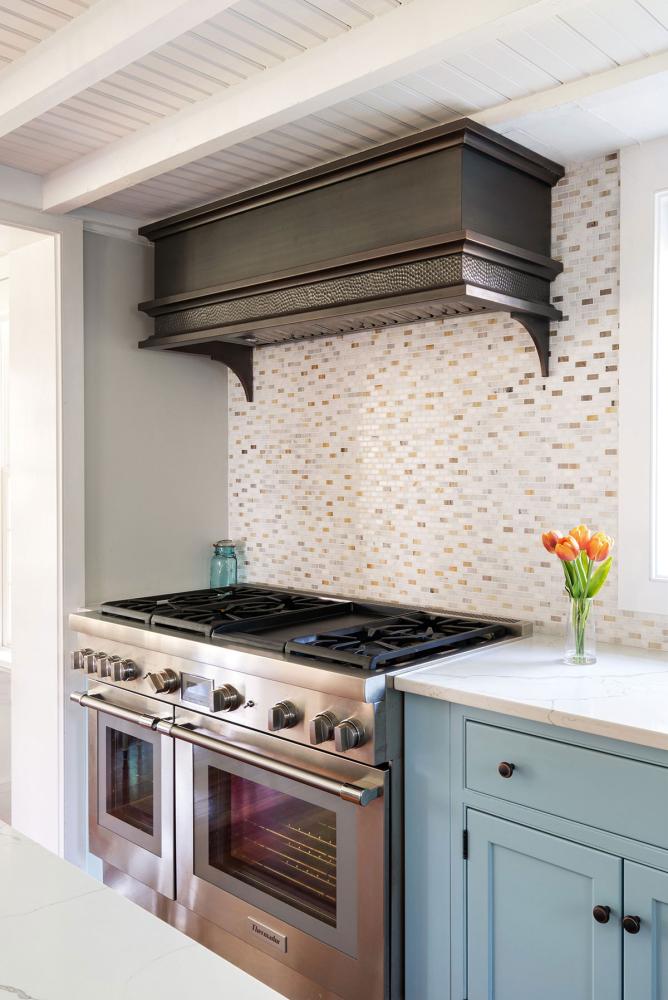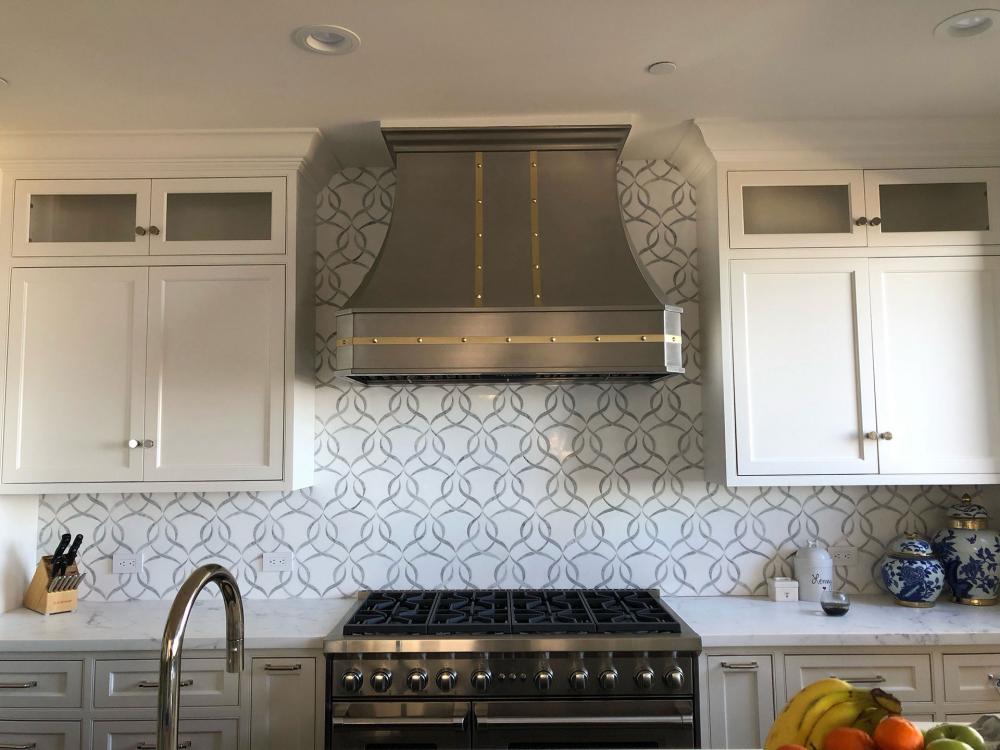In order for your range hood to properly ventilate your kitchen, it must be placed precisely.
Take care to communicate with the professional doing your installation to make sure your new range hood mounting height is correct. It's not something you want to do twice. If you have your range hood installed too high, it won't capture the airborne pollutants correctly. Too low, and it will interfere with your ability to use the cooking surface.
How high should a range hood be from the stove?
The correct height depends on the kind of stove you have: electric or gas.
For an electric range, your vent hood should be installed so the bottom is 20"-24" above the stovetop.
For gas ranges, especially a high BTU gas range, your hood should be installed so the bottom is 24"-30" above your stovetop.
Within these parameters, your range hood should function at optimal efficiency. For this process, wall-mounted range hood height and island range hood height are identical.
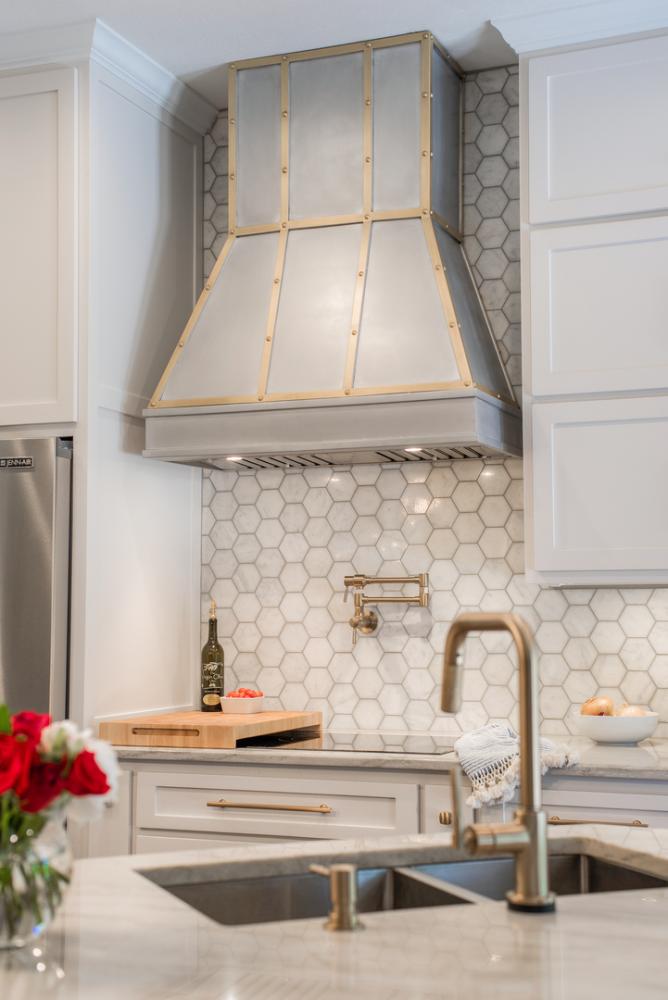
How high is too high for a range hood?
Above 30" from the stove, your hood won't be able to capture all of the exhaust coming off of your stove, and this polluted air will leak into your space.
More powerful range hood fans, like those used for outdoor range hoods, can afford to be installed up near 30". Weaker insert fans will struggle to capture all of the exhaust, and so should be placed a few inches lower.
At the same time, you don’t want to place the range hood too low. Having it just above the hob interferes with cooking and can be dangerous in some situations.
What width should a range hood be?
Another critical factor in the optimal placement of your range hood is the width of your hood. Measure your stovetop carefully. A range hood should be at least as wide, never narrower, than your range. Ideally, make your hood a few inches wider than the cooktop you're ventilating.
What depth should a range hood be?
Range hoods should be deep enough to fully cover your back burners and then cover half of your front burners. Generally, you want them to be about 2 to 3 inches less than your cooktop’s total depth from the wall. This arraignment is usually sufficient to capture the vast majority of cooking gases as long as your fans are powerful enough.
Practically speaking, a shallower depth makes it easier to stand close to your hob without knocking your head (if your hood is low or you’re a tall person). You’ll sometimes see much larger extractors in commercial kitchens that cover the entire hob surface and a little beyond. However, these tend to be significantly more powerful and larger than their domestic equivalents because of the sheer volume of gases they need to exhaust.
Do range hoods have to go to the ceiling?
While island range hoods are installed directly into your ceiling, wall-mounted range hoods go into the wall, and their ducting can go straight outside from this position.
Your CopperSmith range hood installation manual details the necessary steps for this process, for either a wall-mount hood or an island hood.
How much CFM do I need for a range hood?
The cubic feet per minute measurement of your insert fan is another pertinent aspect of this question.
In general, a higher CFM fan can afford to be farther from the stove; a lower CFM fan should err on the side of caution and be placed closer to the stove.
If you're unsure of the CFM requirements for your space, or whether your selection will affect the eventual height of your hood, ask our expert customer assistance for help.
It's always best to vent the hood outside vs having the range hood be a recirculating style.
Can range hoods be too powerful?
Ideally, you want to buy a range hood with sufficient power for your cooker. As discussed above, this will depend on the height above the hob and the exhaust volume you expect.
Buying a more powerful range hood is generally a good idea. However, it is possible for it to be too powerful for your needs. While exhausting air from your kitchen shouldn’t deprive it of oxygen (which a gas hob requires to burn), it may increase your energy bills unnecessarily without providing any additional benefit.
Do range hoods require a lot of electricity?
Range hoods don’t usually require much electricity. While many electric ovens will easily consume 2500 watts, hoods will only pull between 70 and 150 watts.
The reason for this difference is how these appliances use energy. Most range hoods only require electricity to power their fans while other components, like ducting and filters, are passive. On the other hand, ovens require vast energy to generate heat and they lose energy to the surrounding environment.
How long do range hoods last and does height make a difference?
Regular range hoods last around 14 years before requiring replacement. Over time, steam and grease can damage the metals and components. However, copper range hoods may last longer because of the quality of the metal.
Higher-quality hoods cost more to buy upfront. However, you don’t need to spend as much money buying replacement parts later on.
How high should the range hood be if you have an induction hob?
Range hoods should be at least 27 inches above induction hobs, as with regular gas and electric hobs. That’s because induction cooking still generates grease, oils, smoke, and strong cooking smells even if the heating method is different. (Induction hobs are cool to the touch when switched on, but the food they cook is not).
How high should a gas or electric cooktop be off the floor?
When considering the height of your range hood, you’ll also need to account for the height of the electric or gas cooktop from the floor.
Most cooktops should be at least 36 inches from the floor. However, you may require higher than that in some situations, particularly if you have children. You’ll need to factor this into consideration when calculating the total height of your range plus hood.
Many stoves have feet that let you adjust the height by an inch or so and ensure they stand evenly. You’ll need to unscrew these evenly, using a level to ensure the hob remains true.
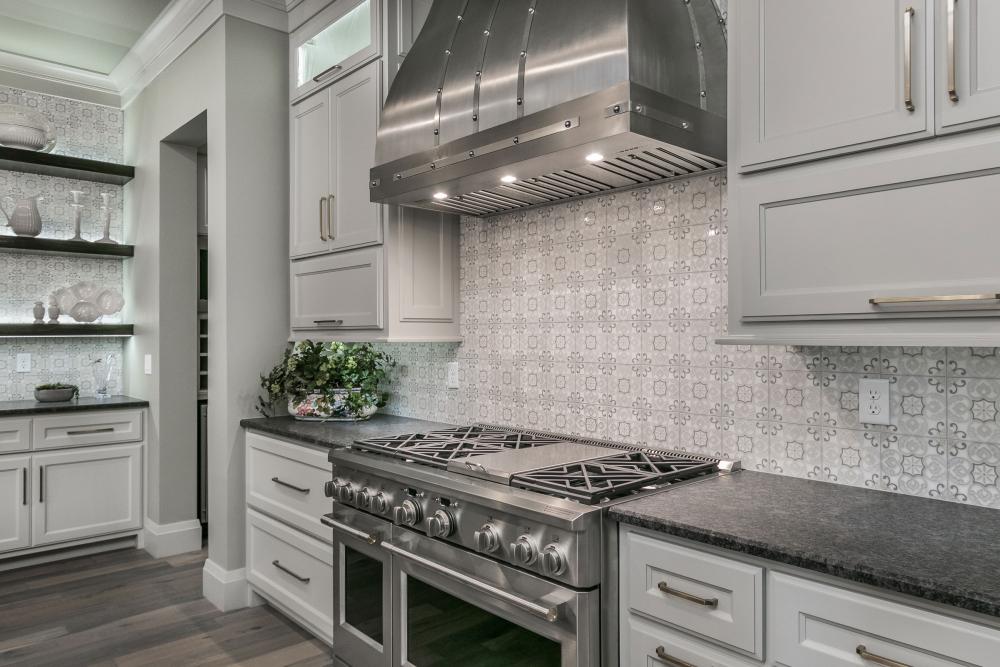
Should range hoods go to the ceiling?
Range hoods don’t have to extend all the way to the ceiling, but this practice can help them look more stylish and impressive. Full-height stoves can act as a centerpiece for your kitchen, drawing the eye upwards, and giving the impression of height.
Do you need to leave a space between range hoods and cabinets?
Leaving space between your range hood and surrounding cabinets is a good idea for several reasons. For instance, a lack of space can make installation more difficult, and small gaps can lead to the accumulation of dirt and grease.
Always measure the space available for the hood and then leave an extra inch or so on either side. This additional room makes it easy to remove, service, or replace your range hood in the future.
As an additional note, cabinets close to the range hood can shift or expand over time. If they are in contact with the range hood when this happens, they can cause significant damage. Remember, wooden cabinets immediately adjacent to the range hood are at a higher risk of the moisture infiltration that could cause them to expand than those elsewhere.
The best range hoods, at any height
World CopperSmith is dedicated to producing the best range of hoods, handmade from the best materials to your exact specifications. Browse our full catalog to find the range hood of your dreams today.

